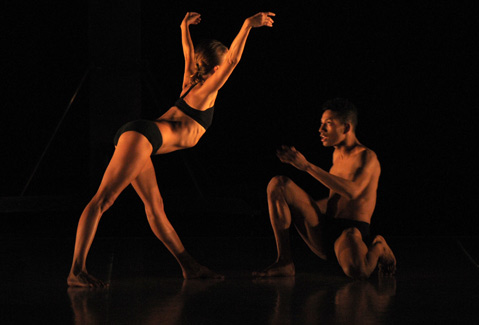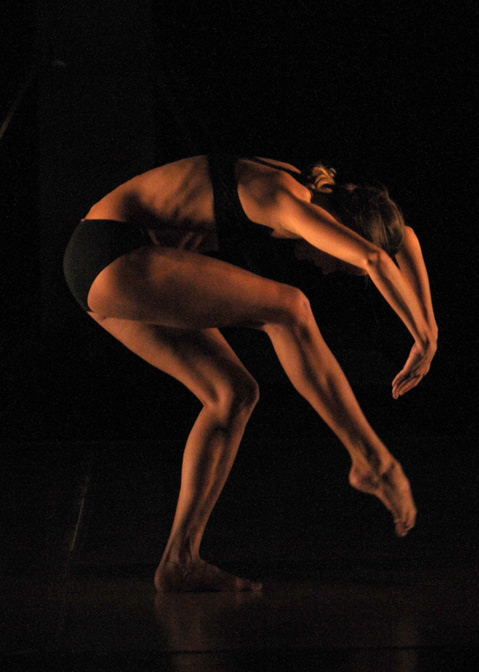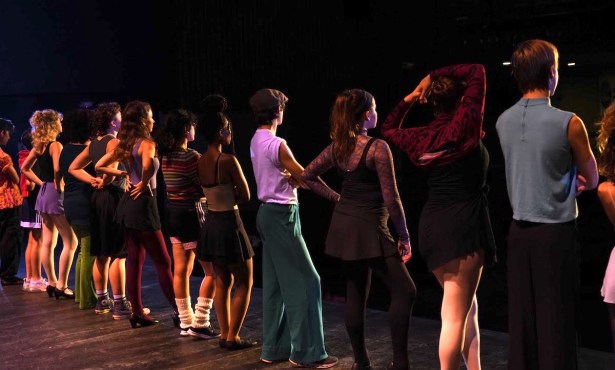Wayne McGregor | Random Dance at the Granada February 15
UCSB Arts & Lectures Contemporary Dance Series Continues with Entity

This chapter in Arts & Lectures’ excellent 2011-12 dance series brought the latest work of one of Britain’s most acclaimed contemporary choreographers to the Granada stage. Wayne McGregor is both the artistic director of Wayne McGregor | Random Dance, which is in residence at the Sadler’s Wells Theatre in London, and the resident choreographer at The Royal Ballet. Along with Matthew Bourne and Christopher Wheeldon, McGregor is part of an unusually rich and potent generation of British choreographers intent on establishing dance as the most innovative medium on the frontier of contemporary performance.
Entity, the piece that the company performed on Wednesday, runs continuously for a little more than an hour, and is divided into two nearly equal parts by a switch between the first half’s original music for string ensemble by composer Joby Talbot, and the second half’s bass-heavy electronica by Massive Attack collaborator Jon Hopkins. The brilliant set, which involves three large wing-like horizontal scrims that are cantilevered to move vertically, is by Patrick Burnier, as are the remarkably brief costumes of simple black shorts, occasional white T-shirts, and black sports bras for the women.

The first thing one notices as the 10 dancers become active is how little concern McGregor displays for conventional gender roles. Men partner men as easily and naturally as they do women, and the lifts and pas de deux are consistently universal in their application. McGregor’s dancers, extraordinary athletes all, get co-credit for the choreography on this piece, and it’s easy to see why. Each member brings something distinctive to the movement vocabulary, which verges on deliberate ugliness in its emphasis on isolation, splayed feet, and distorted postures, only to resolve at the most unexpected moments into poses of transcendent grace.
McGregor developed Entity in part through collaboration with a group of neuroscientists and computer programmers, and the resulting patterns, which are intended to articulate specific relations between brain activity and the body, achieve a stark independence from more conventional forms of dance. Yet, despite his reliance on science, McGregor has a poet’s appreciation for the emotional content of imagery and a lover’s desire for the physicality of his dancer’s bodies. In one relatively short improvised sequence, the dancers cue one another with a series of verbal commands, mostly inaudible to the audience, but highly visible in their impact. “Initiate” a dancer might say, causing two other members of the company to quickly join hands, or “escape,” bringing about any number of responses ranging from departure from the group to isolation of an arm or leg in a move that’s as though the individual dancer were trying to escape from some aspect of his or her own body. Finally, there’s the fascinating command “off balance,” which also called forth a wide array of responses, from backward sprawling to sharply angled lifts and hops.
Of all McGregor’s many skills as a choreographer, his staggeringly prolific imagination when it came to groupings was most memorable. Particularly during the second half of the performance, when Hopkins’s music throbbed and pulsed relentlessly, the dancers engaged in an equally persistent flux of combination and recombination, often coming together and moving apart so rapidly that duos, trios, quartets, and quintets manifested and mutated as rapidly as the eye could take them in. The way that these dancers used the full stage to reimagine for us what a group could be was truly thrilling, especially when those dancers momentarily removed from the focus point formed a kind of active second audience onstage, mirroring and modeling the response in the room.
Dance at this level achieves something that few art forms can even aspire to, never mind claim—the status of thought as it takes shape, rather than once it has been resolved into existing categories and submitted to the claims of language. Wayne McGregor | Random Dance succeeded in making movement that, like brain waves, simply is, without needing to be something with a label or a name.



